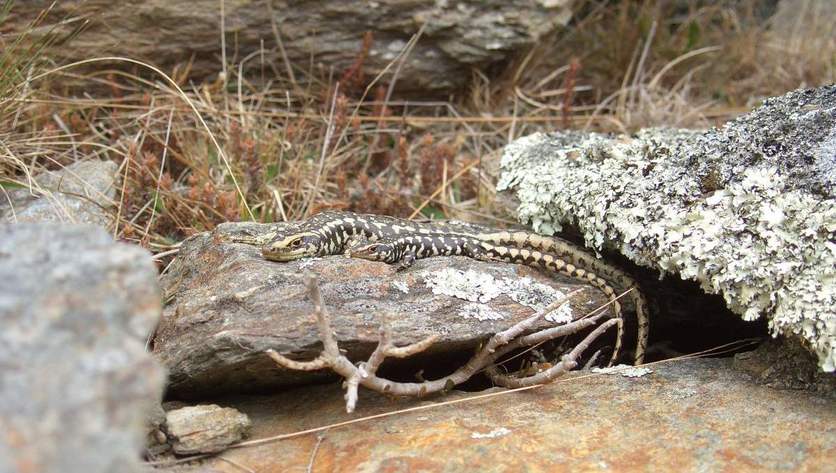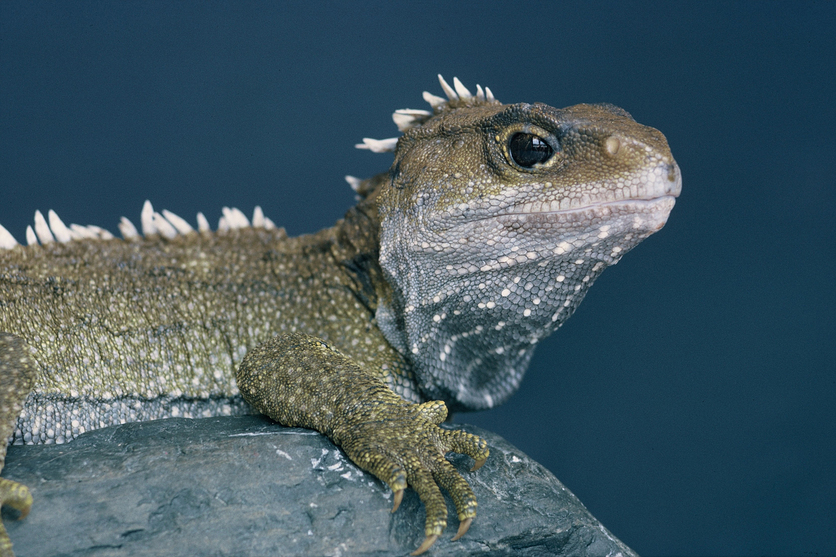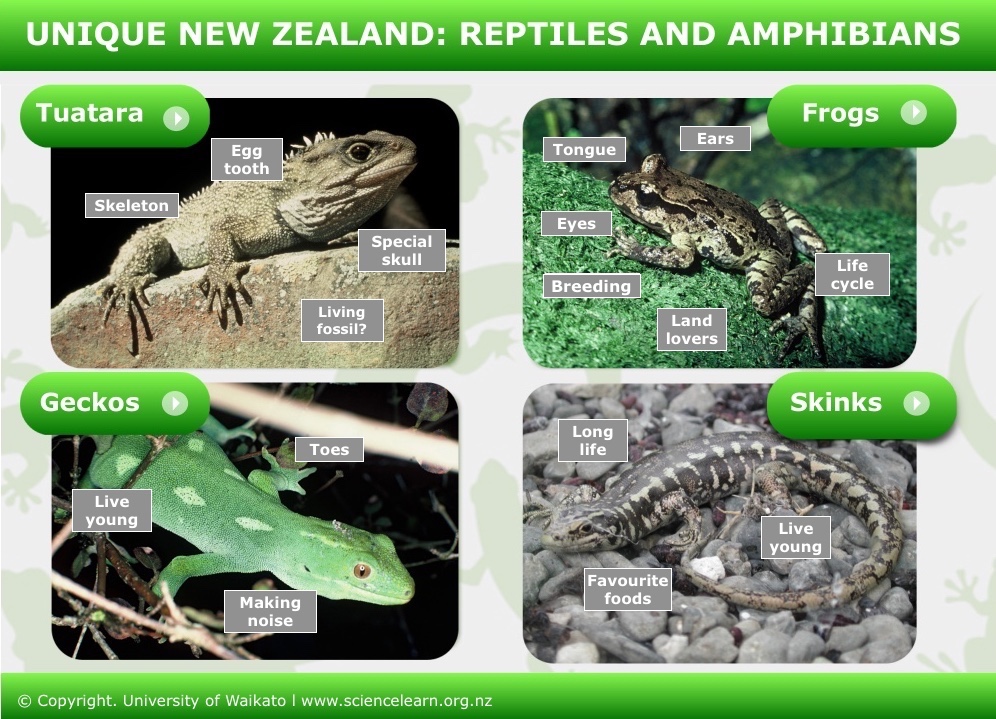New Zealand’s native species evolved in isolation from other regions for millions of years after the last land bridge to Gondwana was lost. Birds and insects dominated our ecosystems, and the only native mammals are 2 species of bat.
Reptiles and amphibians under threat
As a result of this unique history, the survival methods of our native reptiles and amphibians are not adapted to predatory animals introduced by Polynesian and European settlers, and these predators have had devastating effects. For example, our native frogs had evolved a ‘freezing’ defence mechanism – this is very effective against birds that hunt using sight but useless against mammals that hunt using smell. These introduced mammals, as well as disease and loss of habitat, threaten the survival of our remaining reptiles and amphibians. Explore this further in Threats to native reptiles and amphibians.
Let’s explore…
In our collection of resources, we take a closer look at our native reptiles and amphibians. We find out why the tuatara really is one of a kind, we examine the differences between skinks and geckos, and we learn more about the unique features of our native frogs.
We investigate current and historic threats, how conservation rankings help to prioritise actions and what it really means if a species becomes extinct. Find out what is being done to help save our native reptiles and amphibians in New Zealand and discover some of the conservation management tools used, including captive management and translocation.
Meet our scientists
We meet 3 scientists who are actively involved in reptile and amphibian conservation research:
- Phil Bishop is passionate about frogs and talks about his research into frog disease. Find out more about his tailor-made frog tanning salons, built to treat a bone disease affecting our native frogs.
- Alison Cree was involved in the establishment of Orokonui Ecosanctuary near Dunedin. Find out how this mainland island and Alison’s research may enable tuatara to return to the South Island.
- Kelly Hare is interested in which captive management regimes result in the healthiest individuals for future translocations. Discover why she spends time chasing skinks down a reptile racetrack.
In From the smallest bones come the biggest secrets read about the work of former University of Otago Masters student Lachie Scarsbrook. He developed a specialised technique that allows scientists to non-destructively extract ancient DNA from the tiny precious remains of ancient geckos and sequence their genomes without damaging the original fossil. Read the fascinating story of how an elusive new species of gecko was identified and named in 2023. Lachie Scarsbrook was also part of this research team.
Take up the challenge
The student activities involve hands-on challenges and opportunities for observation and discussion.
- Prey behaviour: freeze or flee is a physically active simulation to highlight why mammalian predators have had such a dramatic effect on our native creatures.
- Create a lizard-friendly habitat provides students with ideas on how to attract skinks and geckos to the school grounds.
- Observation: learning to see looks at the role of observation in science and gives students the opportunity to boost their observation skills.
- Similarities and differences: skinks and geckos uses a Venn diagram to illustrate key characteristics and observations.
- Conservation ranking in action explores the processes and criteria used to rank animals according to their conservation threat status.
- Ethics in conservation science encourages students to consider the conservation of native frogs from a number of different perspectives.
- Read the Connected article Kimihia Kermit. It describes how students and Ngāti Mutunga teamed up with an ecologist to investigate frog populations in North Taranaki. Can you design a similar survey?
- Frogs for the future? is a ready-to-use cross-curricular teaching resource. It uses the Connected article Kimihia Kermit as the starting point.
Question bank
The Saving reptiles and amphibians – question bank provides an initial list of questions about saving reptiles and amphibians and places where their answers can be found. The questions support an inquiry approach.
Key terms
For explanations of key concepts, see Saving reptiles and amphibians – key terms
Timeline
Explore the timeline to see look at some of the historical aspects of saving our reptiles and amphibians, the impacts on them by humans and our conversation efforts in New Zealand.
Writer's insight
Have you ever wondered how our resource collections come about? Hub content creator Cath Battersby explains why she wrote this content and how it fits into the New Zealand Curriculum.
Citizen science
Skink Spotter NZ is an online citizen science project that identifies whether skinks are present in time-lapse image sequences. The information will inform scientists about the link between skink behaviour and weather conditions.
FrogID is an online citizen science project that identifies and records the location of introduced frog species in New Zealand.
Te ao Māori connections
Ngārara – te aitanga a Punga provides a short introduction to traditional perspectives of whakapapa among the progeny of Punga.
Useful links
Our Frogs, reptiles and amphibians Pinterest board has a wide range of resources all in one handy place.
See the New Zealand Herpetological Society (NZHS) website, it has comprehensive and freely available online resources about Aotearoa New Zealand’s reptiles and amphibians.
Watch these recorded webinars from NZ Predator Free:
- Protecting our tiny and precious native frogs, listen to Dr Rebecca Stirnemann talking about our unique frogs and what we can do to help them survive.
- A land of lizards, hear native lizard expert Carey Knox talking about his search for rare lizards and the discoveries of new populations throughout New Zealand.
See the book A Naturalist's Guide to the Reptiles & Amphibians of New Zealand by Samuel Purdie. This is an introductory photographic identification guide to all 141 reptile and amphibian species of New Zealand.




